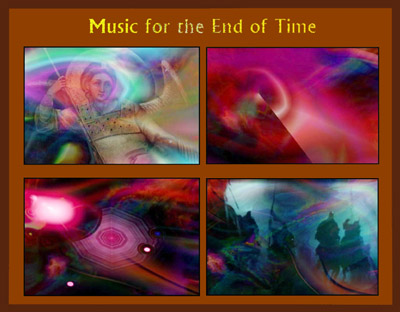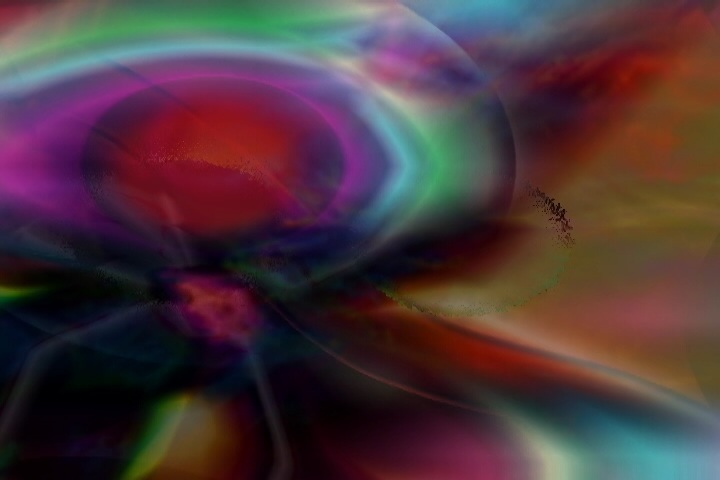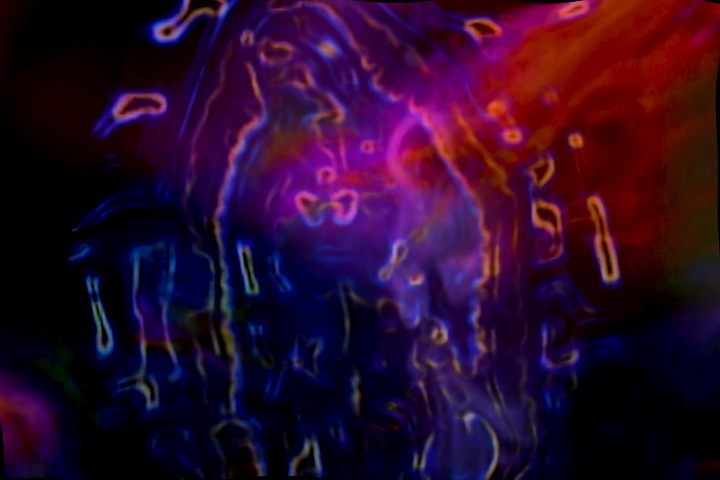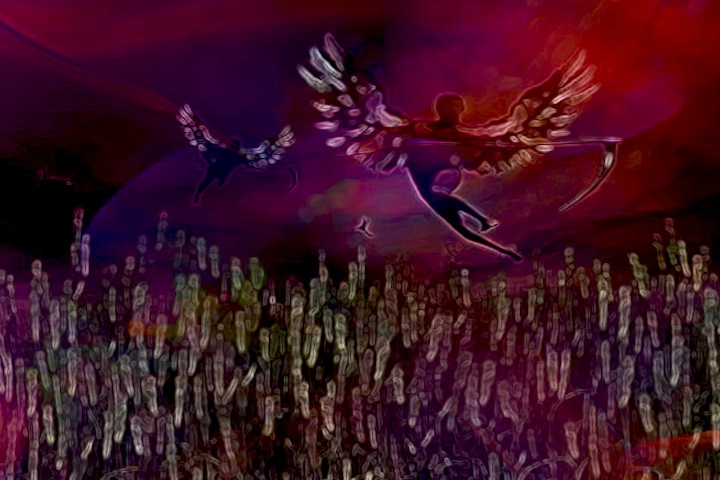| Taos Studio | Photos | Poetry | Trombone Class | Miscellaneous |
Come see something different for Taos.

A dramatic 50-minute multimedia work with
majestic 5.1 surround sound that explores social, psychological, and
philosophical themes of eschatology – universal religious concepts of
the apocalypse found in virtually all religions.
The extraordinary music and video were created by composer
William Osborne featuring
world-class trombonist Abbie Conant
who was principal trombonist of the Munich Philharmonic for 13 years.
Osborne and Conant have presented their
work in over 200 cities in Europe and America to great critical acclaim.
Our downtown studio theater seats 60 in
comfortable chairs.
We have excellent video and audio
projection systems.
The screening will be followed by a Q&A led by
the distinguished filmmaker and photographer
Elisabetta Diorio
whose work has been commissioned by the BBC, PBS, Washington Post,
Austin Chronical, and others.
When:
7:30 PM
Thursday, November 20, 2025
Where:
114 Los Pandos, Taos NM
Parking at Smiths then walk 100 yards up Los Pandos.
Admission is free.
All are welcome.
The atmosphere is casual and relaxed.
For more info about the event telephone William:
575-240-4913
Music for
the End of Time
is in six contiguous movements connected without pause.
The titles are taken from the Book of
Revelation:
I. A Door Was Opened In Heaven
II. The Sea of Glass
III. The Four Horsemen
IV. As It Were of a Trumpet Talking
V. The White Beast
VI. A Woman Clothed With the Sun
In this work we explore Carl Jung and Rudolf
Otto’s idea that archetypes and numinous experience move us beyond the
rational mind and linguistic constructs, that metaphors and symbols
transcend our limitations and are central to artistic creation.
Transcendental experience is presented as a
kaleidoscope of uncontrollable numinous symbols the mind cannot fully
grasp—something Otto described as wholly other, a condition absolutely
sui generis and incomparable where humans find themselves
utterly abashed.
We
explore Carl Jung’s idea that meaningful visionary experience is an
essential part of human consciousness, that it is only when our minds
integrate the rational and numinous that we become whole and gain a
balanced, holistic understanding of an unknowable world.
And finally, we explore the metaphor of
the eternal feminine as a spiritual response to 20th century wars and
destruction that claimed 80 million lives.
In Music for the End of Time, we were
especially influenced by the culture of Northern New Mexico where
Indo-Hispanic farmers in isolated villages of the Sangre de Christos
still embody with great humility long forgotten quasi-medieval concepts
of spiritual transcendence. Their symbols, mythologies, and spiritual
perspectives are little understood by the modern world, but often
greatly admired for their cultural beauty and unique perspectives.
We were also influenced by the endless
space and majesty of nature in the American Southwest, a kind of holy
land that invariably points to something larger than ourselves.
Thursday, Nov. 20, 2025
Some Screen Shots From the Film
 |
 |
 |
 |
 |
 |
 |
 |
 |
Juilliard trained Abbie Conant--one of the
world’s most esteemed classical trombonists-- was principal of the
Munich Philharmonic for 13 years. In recent years, William and Abbie
have toured to over 200 cities in America and Europe to great critical
acclaim with William’s compositions. Their European venues have included
the Munich Biennale, The Stuttgarter Tage für Neue Musik, The Hamburg
State Opera, The Bavarian State Opera, The Freiburg Theater Festival,
The State Theater of Kassel, Frankfurt’s Theater am Turm, Munich’s
Gasteig Cultrual Center, and Nuovo Forme Sonare in Rome. They have
performed and given workshops at most of America’s major music schools
including The Juilliard School, The New England Conservatory, Yale
University, The Eastman School of Music, The Peabody Conservatory,
Indiana University, The San Francisco Conservatory, Cal Arts, the
University of California at Berkley, Ithaca College, USC, and the
University of Texas.
Abbie has been a guest on NPR’s Performance
Today as well as on the West German Radio, SW German Radio, Canadian
Broadcast Company, and New York City’s classical station WQXR.
William Osborne is a fourth generation New
Mexican who studied on a full scholarship at the famous L'Academia di
Santa Cecilia in Rome. He has received two ASCAP awards, a Doctoral
Fellowship to Columbia University with full tuition and no work
requirements, and alternate to the American Rome Prize.
Elisabetta Diorio is a photographer and
filmmaker interested in experimental and poetic styles. She graduated
from Columbia University in 2020 and has since worked as an arts
educator and freelancer for musicians, non-profits, and public media.
Her contracted documentary work has been featured in the Washington
Post, the BBC, PBS, and the Austin Chronicle. In 2025, Elisabetta was
awarded the Helene Wurlitzer Residency in Taos, New Mexico for her
photography.
We look forward to sharing our artistic efforts with you this Thursday, Nov. 20 at 7:30 PM.